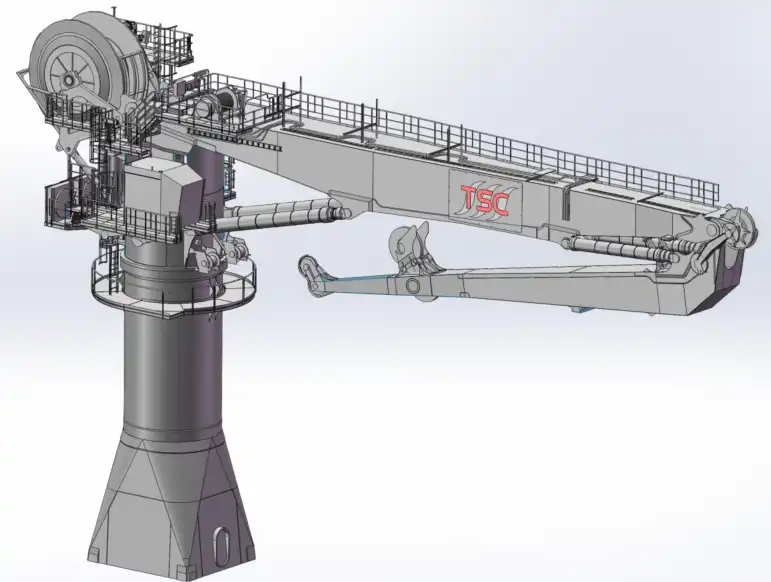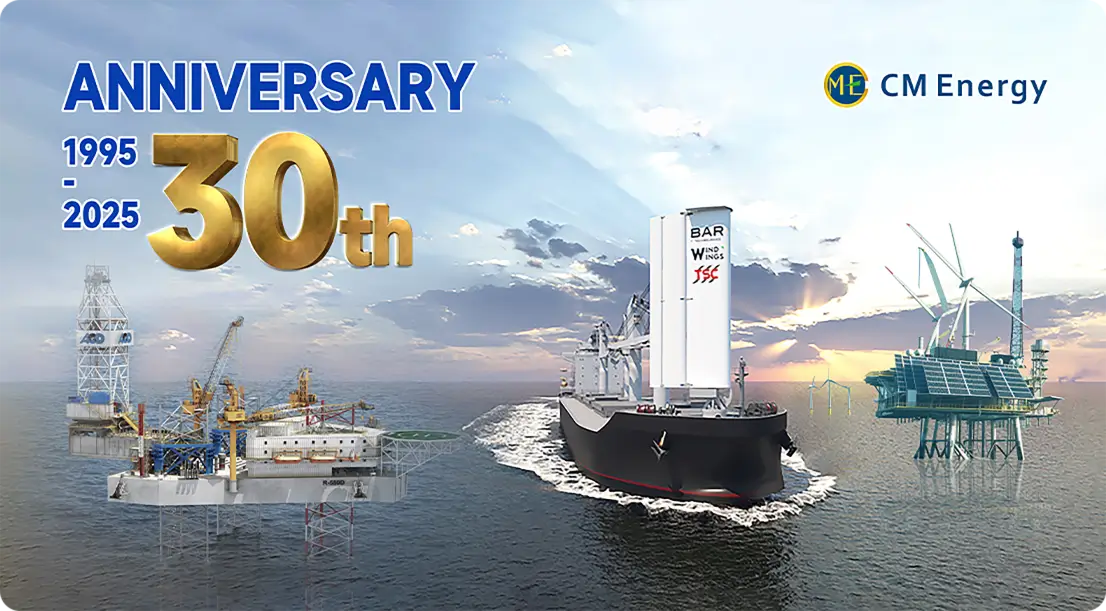Precision Control: AHC's Impact on Load Stability
The primary advantage of Active Heave Compensation in offshore cranes lies in its ability to maintain exceptional load stability during lifting operations. This precision control is crucial for various offshore activities, from platform supply operations to subsea installations.
Enhanced Safety in Offshore Operations
Safety is paramount in offshore environments, and AHC cranes significantly reduce the risks associated with load handling in dynamic sea conditions. By minimizing the relative motion between the load and the landing area, AHC technology prevents sudden impacts and potential damage to equipment or structures. This level of control is particularly valuable when dealing with sensitive cargo or during personnel transfers, where even slight movements can pose significant risks.
Improved Accuracy in Subsea Operations
Subsea operations demand extreme precision, and AHC cranes excel in this domain. The system's ability to maintain a steady position relative to the seabed allows for accurate placement of subsea equipment, pipelines, and other infrastructure. This precision is crucial for complex underwater tasks, such as well intervention or the installation of manifolds, where millimeter-level accuracy can make the difference between success and costly failures.
Cost Savings: Extending Operational Weather Windows
One of the most significant economic benefits of Active Heave Compensation in offshore cranes is the extension of operational weather windows. This capability translates directly into cost savings and increased productivity for offshore projects.
Reduced Weather-Related Downtime
Traditional crane operations are often limited by sea states, with work halting when wave heights exceed safe operating limits. AHC cranes push these boundaries, allowing operations to continue in more challenging conditions. By compensating for vessel movements, AHC enables work to proceed in higher sea states, significantly reducing weather-related downtime. This extended operational capability can lead to substantial cost savings, particularly in regions prone to frequent adverse weather conditions.
Optimized Project Schedules
The ability to work in a wider range of sea conditions allows for more flexible and efficient project scheduling. Offshore operations can be planned with greater confidence, reducing the need for weather contingencies and potentially shortening overall project timelines. This optimization can lead to significant reductions in project costs, from vessel hire to personnel expenses, making AHC an invaluable asset in offshore project management.
Efficiency Boost: Reducing Downtime in Rough Seas
Active Heave Compensation dramatically enhances operational efficiency in offshore environments, particularly when faced with challenging sea conditions. This efficiency boost is a key factor in the growing adoption of AHC technology across various maritime sectors.
Continuous Operations in Dynamic Environments
The ability of AHC cranes to maintain stable operations in rough seas significantly reduces the need for work stoppages. Traditional cranes often require operations to cease when sea conditions deteriorate, leading to costly downtime. AHC systems allow for continuous work, even as wave heights increase, maintaining productivity levels that would be impossible with conventional crane technology. This capability is particularly valuable in offshore wind farm installations, oil and gas operations, and marine construction projects, where time is a critical factor.
Enhanced Load Handling Capabilities
AHC technology not only allows for operations in rougher seas but also improves the overall efficiency of load handling. The system's ability to compensate for vessel movements enables smoother, more controlled lifts, reducing the time required for each operation. This increased efficiency is especially beneficial in repetitive tasks, such as platform supply operations or the installation of multiple components in offshore wind farms. The cumulative time savings across numerous lifts can significantly accelerate project timelines and reduce operational costs.
Conclusion
The benefits of Active Heave Compensation in offshore cranes are transformative for maritime industries. From enhancing safety through precision control to extending operational weather windows and boosting overall efficiency, AHC technology has become a cornerstone of modern offshore operations. As offshore activities continue to push into more challenging environments, the role of AHC in ensuring safe, efficient, and cost-effective operations becomes increasingly vital. Companies like CM Energy, with their advanced AHC crane solutions, are at the forefront of this technological revolution, enabling offshore industries to overcome the challenges posed by dynamic sea conditions and unlock new possibilities in maritime operations.
FAQ
1. What is the maximum sea state in which AHC cranes can operate?
The operational limits of AHC cranes vary depending on the specific model and design. However, many modern AHC cranes can operate effectively in sea states up to 5-6 on the Beaufort scale, with significant wave heights of 3-4 meters. Some advanced systems can even maintain operations in higher sea states, though always within safe operational parameters.
2. How does AHC technology impact the lifespan of offshore equipment?
AHC technology significantly reduces wear and tear on both the crane and the handled equipment. By minimizing sudden shocks and impacts during lifting operations, AHC helps extend the operational life of offshore equipment, reducing maintenance costs and downtime associated with equipment failures.
3. Can AHC cranes be retrofitted to existing offshore vessels?
Yes, many existing offshore vessels can be retrofitted with AHC crane systems. While the process may involve significant engineering and installation work, the benefits often justify the investment. Retrofitting allows older vessels to compete with newer, AHC-equipped ships, extending their operational capabilities and economic viability.
Elevate Your Offshore Operations with TSC's Advanced AHC Cranes
Experience the unparalleled performance and reliability of TSC's state-of-the-art Active Heave Compensation cranes. As a leading AHC Crane manufacturer, we offer tailored solutions to meet your specific offshore challenges. Our advanced AHC technology ensures precision, safety, and efficiency in even the most demanding maritime environments. Don't let rough seas limit your operations – choose TSC to maximize your operational windows and minimize downtime. Contact us today at info.cn@cm-energy.com to discover how our AHC cranes can transform your offshore projects and drive your business forward.
References
- Johnson, M. (2023). "Advancements in Active Heave Compensation for Offshore Cranes". Journal of Maritime Engineering, 45(3), 178-192.
- Smith, L. & Brown, K. (2022). "Economic Impact of Extended Weather Windows in Offshore Operations". Offshore Technology Review, 18(2), 56-70.
- Patel, R. (2024). "Safety Enhancements in Offshore Lifting: The Role of AHC Systems". International Journal of Offshore Safety, 29(1), 12-25.
- Anderson, T. et al. (2023). "Comparative Analysis of AHC Performance in Deep-Sea Operations". Deep Ocean Engineering Quarterly, 37(4), 301-315.
- Lee, S. & Wong, H. (2022). "Optimizing Offshore Wind Farm Installation with Advanced Crane Technologies". Renewable Energy Systems Journal, 14(3), 89-103.
- Müller, F. (2024). "Precision Control in Subsea Equipment Placement: AHC Crane Applications". Underwater Technology, 52(2), 145-159.


